
Person in Charge:
Mr. Leonard Bayang
RESEARCH OBJECTIVE
The Optical Calibraton Facility focuses on providing calibration and test services especially for telecommunication equipment and devices. The management of laboratories for calibration and test follows strictly to the ISO/IEC 17025 requirement to ensure our customers of highest quality and most trusted services.

Person in Charge:
Dr. Muhammad Zharif Samion
RESEARCH OBJECTIVE
High power laser lab focuses to construct fiber laser with output power at Watt scales. Currently, there are three different wavelength laser configurations, 1.0 µm, 1.5 µm, and 2 µm. This lab is established to realize the objective of Photonic Research Center to move towards industrial sector.

Person in Charge:
Dr. Muhamad Zharif Samion
RESEARCH OBJECTIVE
Research in this lab focuses on developing 2nm fiber lasers utilizing different gain media such as thulium-doped fiber, thulium-holmium doped fiber and holmium doped fiber. The type of lasers being developed are usually pulsed fiber lasers and also multiwavelength fiber lasers using compact and cost-effective techniques.

Person in Charge:
Dr. Muhamad Zharif Samion
RESEARCH OBJECTIVE
Research in this lab focuses on developing 2nm fiber lasers utilizing different gain media such as thulium-doped fiber, thulium-holmium doped fiber and holmium doped fiber. The type of lasers being developed are usually pulsed fiber lasers and also multiwavelength fiber lasers using compact and cost-effective techniques.
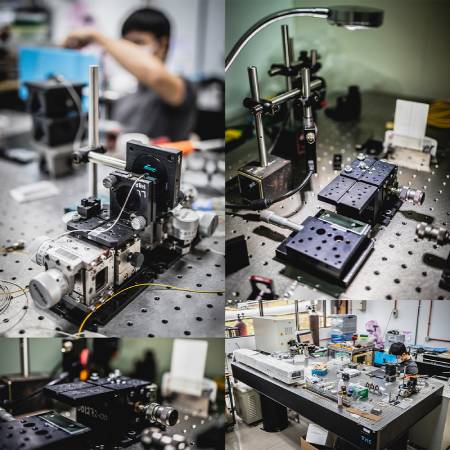
Person in Charge:
Assoc. Prof. Ir. Dr. Lim Kok Sing
RESEARCH OBJECTIVE
Optical fiber sensors and signal processing laboratory focuses on the research and development of various optical fiber components for sensing applications include fiber Bragg gratings, few-mode fiber components, optical fiber interferometer and optical instrumentation. Besides, the research team is also interested in the study of optical signal processing and digital processing to improve the signal quality and detection performance of the optical fiber sensors. The research team works closely with other reputed research groups in the interdisciplinary area such as medical laser device, Surface plasmon resonance biosensors and optical communication.
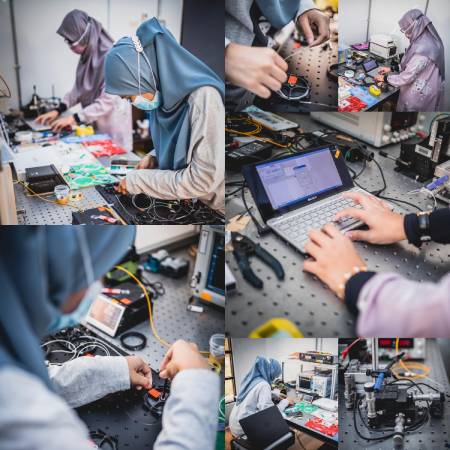
Person in Charge:
Dr. Siti Aisyah Reduan
RESEARCH OBJECTIVE
Our group explores optical material interactions to develop novel pulsed laser sources in the near infrared (e.g., 1.3 µm and 1.5 µm) regime. Our research focuses on novel modulation devices and how light interactions can fuel new applications in biomedical imaging and material characterization. We study femtosecond pulse generation techniques (1 femtosecond = 10-15 seconds) to advance photonic technologies that modulate and transmit light efficiently. Compact pulsed fiber laser systems are pursued for applications in communications, biomedical diagnostics and treatment, frequency metrology, environmental sensing and spectroscopy.
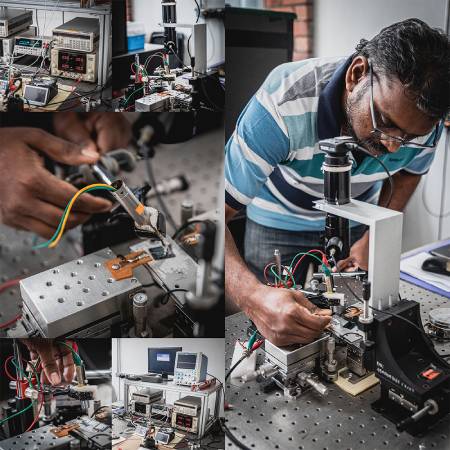
Person in Charge:
Dr. Nima Naderi
RESEARCH OBJECTIVE
The Photodetection laboratory is set up to study the photo-electron generation principle and capability of 2-D materials, which include graphene, graphene oxides, transition metal dichalcogenides, metal nanoparticles, etc. The laboratory is equipped with laser sources with different colours and a 4-point probe and micro-positioning stages for the precise positioning of the probes on the thin film photodetector samples. Among others, broadband photodetection with large responsivity have been achieved using MoS2-based photodetectors enhanced with Au nanostructures.
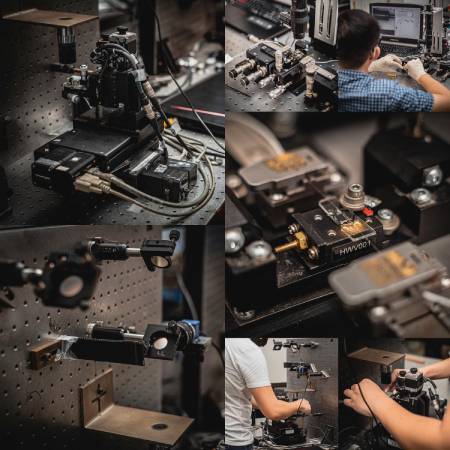
Person in Charge: Assoc. Prof. Dr. Chong Wu Yi
RESEARCH OBJECTIVE
The PLC laboratory houses a laser direct writing setup for waveguide fabrication using polymer materials. In addition, there are various characterization setups for optical performance measurement of optical planar waveguides. One of the research objectives of the laboratory is to develop hybrid waveguides where passive optical waveguides are functionalized with active materials to increase the functionality of a single optical waveguide chip. This has led to the development of broadband and high polarization extinction ratio waveguide polarizer, all-optical switches and optical sensors.
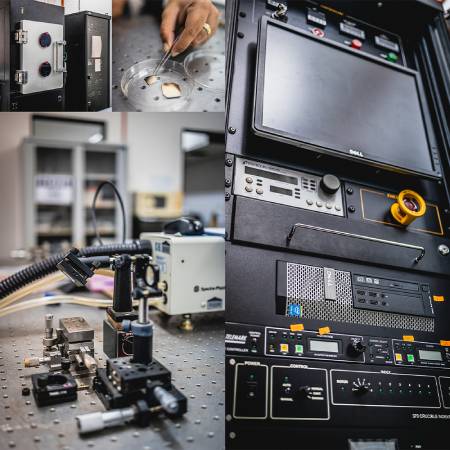
Person in Charge:
Assoc. Prof. Dr. Rozalina Zakaria
RESEARCH OBJECTIVE
Plasmonic lab is led by Prof Madya Dr Rozalina Zakaria since 2011, as one of the laboratories in Photonics Research Centre (PRC) under the director, Distinguished Prof Dr Harith Ahmad. This lab majors in the field of plasmonic effect in materials. Ever since Dr Rozalina in plasmonic, many students have been produced in various degree, five (5) Master’s graduated, three (3) PhD’s graduated, and seven (7) ongoing postgraduate students as of 2020. Various topics have been focused as well as many papers have been published in ISI and Scopus in various topics. Earlier research was on the topic of plasmonic solar cells and OLED before it merged to surface plasmon resonance in optical fiber sensor. Ongoing research are more on photonics material by integrating various condition namely metallic nanoparticles, two-dimensional materials (graphene and TMDC), and nonlinear optical properties of materials. This includes embarking new and recent materials to be used in photonic devices.
Our lab has main equipment namely Electron beam evaporation machine which able to deposit various metallic layer down to nano-scale thickness with computerized monitoring. This machine has given vast opportunity from internal and external collaboration such as, Nanjing University of Posts and Telecommunication, Nottingham University Semenyih, Universiti Malaysia Terengganu, Universiti Sains Malaysia and Universiti Teknologi Malaysia. Official collaboration is also ongoing between Malaysia and India under ASEAN-India Collaboration Grant and also UM internal collaboration with Chemistry Department under IIRG national grant.
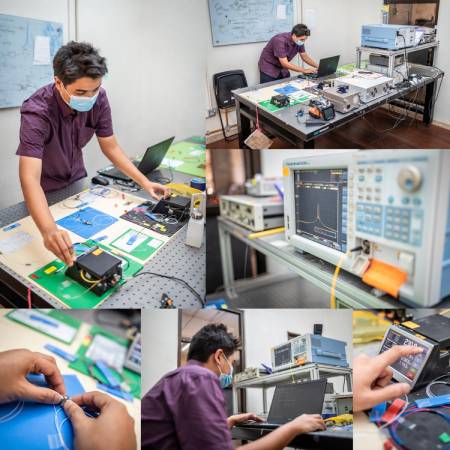
Person in Charge:
Dr. Mohammad Faizal Ismail
RESEARCH OBJECTIVE
Ultrafast Fiber Lab explores the development of novel laser sources in the wavelength of 1.0um to 2.0 um wavelength region. This lab studies the process of femtosecond pulse generation particularly mode-locking in fiber lasers. This lab has developed various types of saturable absorbers for passive mode-locking and q-switching in fiber lasers.
Equipment:
Optical Spectrum Analyzer (350-2400nm)
Optical amplifier (1000-2400nm)
Autocorrelator (1.0, 1.55 and 2.0 um)
Radio Spectrum Analyzer
Sampling Oscilloscope
Tunable laser source (1.0-2.0um)
Last Update: 12/09/2023